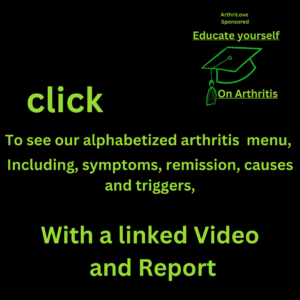
Kawasaki Disease: Number 65 on the list of 100 types of Arthritis
Kawasaki disease is a rare but serious condition that primarily affects young children. It’s a complex illness with unique symptoms and challenges, but with early recognition and appropriate treatment, individuals can have positive outcomes and lead fulfilling lives.
 Description of Kawasaki Disease
Description of Kawasaki Disease
Kawasaki disease, also known as Kawasaki syndrome, is an inflammatory disorder that primarily affects the blood vessels throughout the body, particularly the coronary arteries (the arteries supplying blood to the heart). The exact cause of Kawasaki disease is not known, but it is believed to involve a combination of genetic factors and environmental triggers.
Causes and Triggers
The precise cause of Kawasaki disease remains elusive, but certain factors may contribute to its development. It’s suspected that infections, possibly viral or bacterial, may trigger an abnormal immune response in genetically susceptible individuals, leading to widespread inflammation of blood vessels.
Symptoms
Kawasaki disease is characterized by several hallmark symptoms, including:
- Prolonged high fever: Persistent fever lasting more than five days is a common initial symptom.
- Rash: A rash, often resembling a sunburn or measles, may appear on the trunk and genital area.
- Swollen lymph nodes: Enlarged lymph nodes, particularly in the neck region.
- Red eyes: Conjunctivitis (inflammation of the whites of the eyes) without discharge.
- Swollen hands and feet: Edema (swelling) of the hands and feet, sometimes followed by peeling of the skin.
- Irritability and fussiness: Children may exhibit irritability and general discomfort.
Common Ages of Onset
Kawasaki disease predominantly affects children under the age of 5, with the highest incidence occurring in toddlers and preschool-aged children. It is less common in older children and adults.
Impact on Lifespan
Kawasaki disease, when promptly diagnosed and treated, typically does not have a significant impact on lifespan. However, untreated or severe cases can lead to complications affecting the heart, which may affect long-term health.
Autoimmune Nature
Kawasaki disease is not considered an autoimmune disorder, although it involves an abnormal immune response. Instead of attacking the body’s own tissues, the immune system appears to target blood vessels in response to an external trigger.
 Achieving a Higher Quality of Life
Achieving a Higher Quality of Life
With a proactive approach to managing Kawasaki disease, individuals can achieve a higher quality of life. This includes:
- Early diagnosis: Prompt recognition and treatment of Kawasaki disease can minimize complications and reduce the risk of heart-related issues.
- Follow-up care: Regular monitoring by healthcare professionals, including cardiologists, can ensure ongoing heart health.
- Supportive care: Providing comfort and addressing symptoms promptly can improve overall well-being during the acute phase of the illness.
Possible Complications
Complications of Kawasaki disease may include:
- Coronary artery abnormalities: The most serious complication of Kawasaki disease is the development of coronary artery aneurysms or other heart-related issues.
- Vasculitis: Inflammation of blood vessels throughout the body can lead to complications affecting various organs.
- Joint pain and limited range of motion: Although less common, joint pain and arthritis-like symptoms may occur during the acute phase.
Natural Breakthroughs or Health Advantages
There are no specific natural breakthroughs associated with Kawasaki disease, but maintaining a healthy lifestyle with a balanced diet, regular exercise, and stress management can support overall well-being and immune function.
Gender and Age Prevalence
Kawasaki disease affects boys more frequently than girls, and there is a higher incidence among children of Asian descent. The disease predominantly occurs in young children, particularly those under the age of 5.
Interconnected Diseases or Conditions
There are no specific interconnected diseases directly associated with Kawasaki disease. However, it’s important to monitor for potential long-term cardiovascular complications, as individuals with a history of Kawasaki disease may require specialized care.
In conclusion, Kawasaki disease is a complex illness that primarily affects young children and requires early recognition and treatment to prevent complications, particularly those affecting the heart. With proactive management and ongoing follow-up care, individuals with Kawasaki disease can lead fulfilling lives and maintain good overall health. Collaboration with healthcare professionals experienced in pediatric rheumatology and cardiology is essential for personalized care and optimal outcomes.